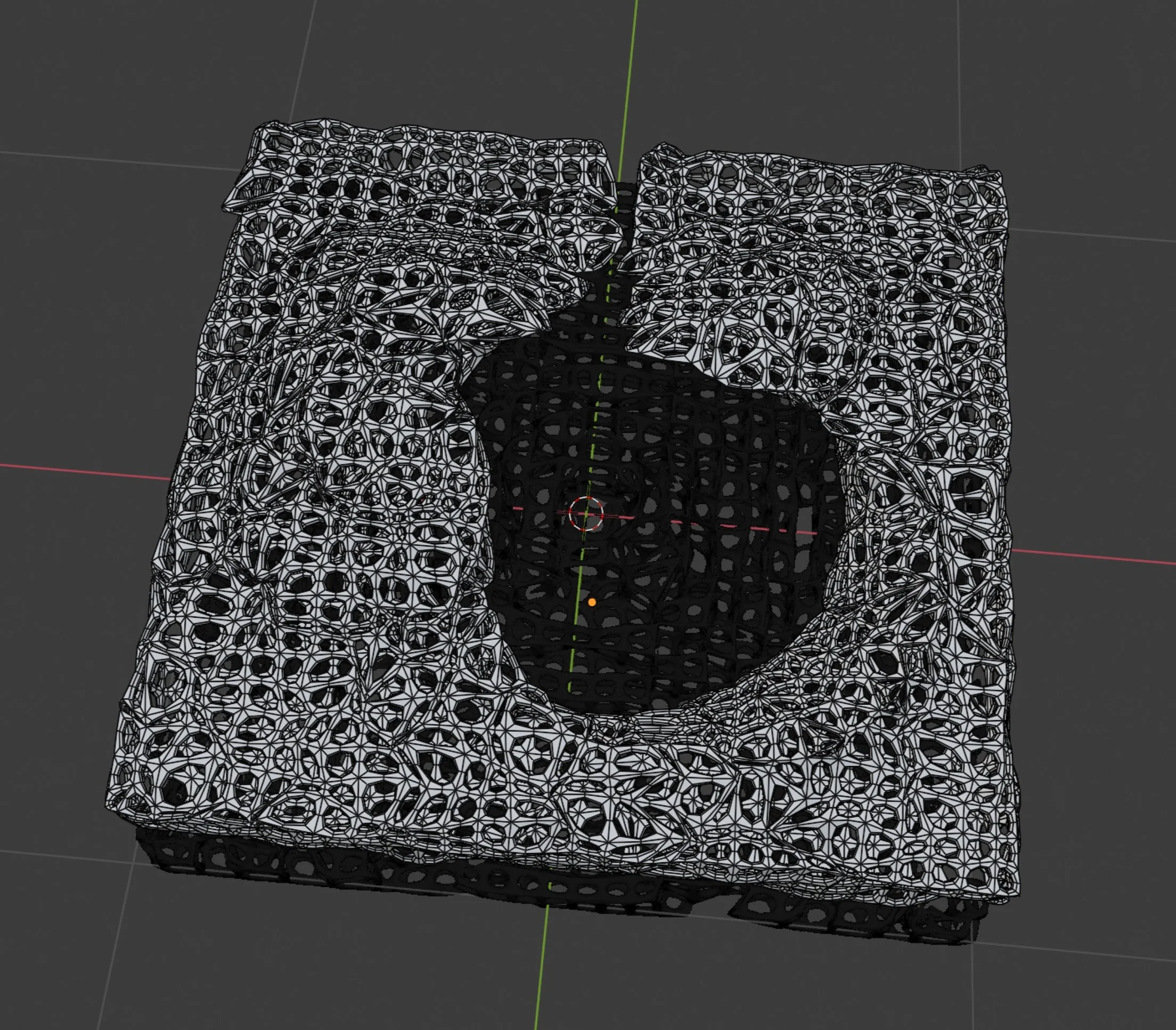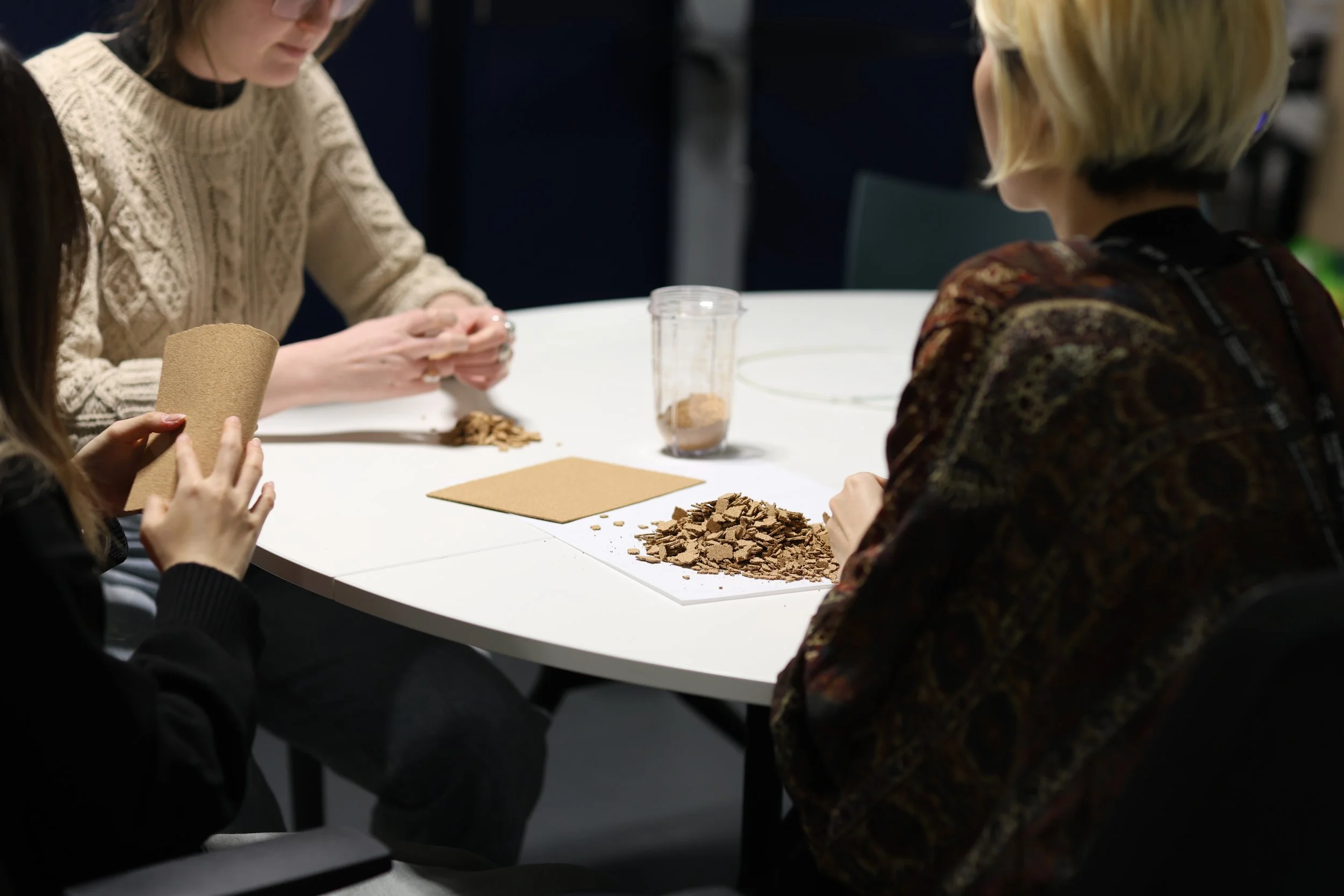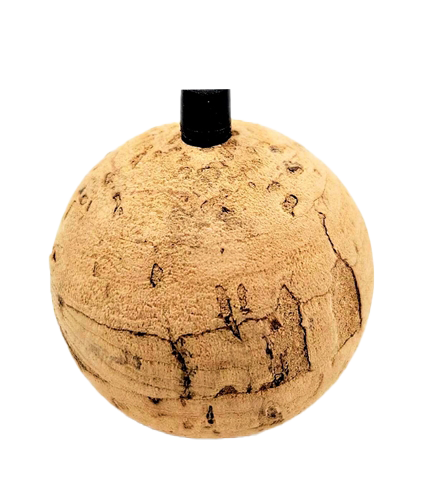Tidal Tape
The outcome of a month long challenge realised during my master’s degree where I took part, along with four other teamates, in the creation of an innovative solution to save Uk coastline. Our goal was the protection of coastal life through both an ecological and social perspective. My team was allocated the Morecambe location.
THE CHALLENGE
One month to repair coastal life
Morecambe has experienced a crushing economic decline since the 1980s and is now facing the challenges of climate change. We aimed to design a sustainable solution to preserve wild life while boosting the local economy of this exhaust city.
Our high level goals were to:
1 Create a positive change on wildlife, birds esspecially
2 Actively involve the community and boost economy
3 Dessign a practical solution that can be realisticly implemented in the area short term
With one month and no budget, this project did not had for aim to create a fully functional outcome, but rather create a clear and powerful narative, with a particular emphasis on visual comunication, as the expected end result was a short movie.
MY ROLE
Project Management, repartition of the workload to the members of the group, establishing a project plan, and conducting research and interviews.
Critical and design thinking, finding creative solution with an enphasis on material selection, usage and sourcing, ensuring coherence between solution and the project ethos, creating a broader narrative of sustainability and positive social impact.
Artistic direction, oversaw all content creation, scriptwriting, scene direction, and movie montage.
Early Project Contributions, participation in self-innitiated brief creation, brainstorming and early model making.
MORECAMBE
BAY
We had not yet set our objectives on how to help the bay and its population, neither did we had access to our location, yet even without pre-existing insights, we quickly realised the importance the wildlife occupies in the bay.
References to birds are everywhere in the city of Morecambe, reflecting the economic and ecological importance of it’s unique bird population. Despite conservation efforts, this local fauna is at risk due to habitat loss and food source scarcity caused by human activities and climate change.
Working from a distance
Our initial approach, drawing on several existing documentation and second hand sources, was to create a filtration device instaled on the mudflats, a place where birds naturally come to feed, to increase the retention of insects and crustaceous and reduce this factor of stress for the bird populations.
Our vision changed over time
With only one opportunity to visit the city, the two days long trip that we embarked on completely change our perception of the bay. I have lead interviews with several residents; fishermans, birdwatchers and the local branch of the RSPB, the royal society for the protection of birds. Those disscutions, along with an in depth contextual inquiry, profoundly tranformed our approach and we recentered our focus on two aspect of the bay that cristalize all our challenges:
The Birds
Preservation of local fauna
Economic importance, bird-watching boosts the local economy.
the Land
Reduced habitable land , risk of flooding.
Ecosystem and wildlife depletion, result of coastline urbanisation.
From then on, land loss became our main consideration, as it is a problem that affect both the birds and the population. This fenomenon is moslty due to soil erosion and water level rise. This approach allows us to address the cause, rather than just the symptoms of the ecosystem's struggle, with the goal of repairing the land in the long run. This concept of repair be central to our project.
Land erosion
Research shows that climate change leads to increased occurrences of heavy rain, strong winds, and flooding, depleting soil vegetation and leaving the land at a higher risk of erosion. We have identified three points of action to moderate its impact.
Stop the elements from pulling soil and plants
Temporary, non toxic solution
Boost vegetation growth
Tidal Tape is made of two structures, a 50cm deep ground anchor made to sustain the rough condition of high-risk coastal areas, and a mesh-like top layer that protects the more fragile roots of the local vegetation from uprooting. Through CFD simulation we were able to test the effectiveness of our design at reducing pressure in key areas.
1
As well as protecting existing vegetation, our product is designed to jumpstart the growth of new plants. The prototype is covered in a mix of seeds local to the area. Then is coated with a thin layer of PVA to secure the seeds. PVA will act as a natural fertilizer when disolving in the soil as the seeds roots.
2
Creating a high-fidelity prototype was crucial for providing a strong visual representation to the audience and for testing some key features of the design. We oriented thowards 3D printing aiming to offer accessible manufacturing to most. Hoever we soon realized the limitations of this system, particularly regarding materials.
Additionally, we recognized that any solution that we would offer would need to be only temporary as if the ongoing impact of climate change persists part of the land wood end up fully submerged. Hence, our structure must be fully biodegradable, if the land would to become submersed in the years ahead. We needed to find a material able to answer those many ecological and physical constraints.
3
Material and production
One of the main design challenges was finding a material that combines resistance, plasticity, and sustainability qualities. I decided to use cork as it is carbon-negative and non-toxic. Additionally, cork performs well in high humidity, naturally withold moisture and is antimold.
Cork will biodegrade within 4 to 7 years, allowing enough time to the development of a perennial vegetation.The objective here is not to permanently transform the landscape but to offer tools to combat land errosion and minimising its effects. We aim to facilitate a smoother transition, allowing ecosystems and inhabitants additional time to adapt.
It was clear for our team that in order to include local population, we needed to design a product that will be easily manufactured. Tidal Tape production involves only a few steps: grinding down cork, mixing in a binder, placing the material in a mould, and using the pressure moulding technique with a hydraulic press to create the desired shape. Beach grass seeds and a PVA coating can then be added to the surface. Its design in two pieces makes it easy to handle and transport. Our design is meant to be used in cluster, covering extensive stretches of at risk land. Once installed, the product operates autonomously.
We aim for Tidal Tape to be composed entirely of recycled cork. Popping corks and buoys are types of waste from the fishing industry found in droves in the area. They are cork floaters of different sizes, mostly used for coastal fishing. The material's on-site availability as well as the minimal machinery used in the fabrication process would permit an easy upcycling of the material. This accessibility would enables small coastal businesses across England to participate in addressing the nationwide issue of coastal erosion while creating circual economic growth for the local population.
Sourcing and the community
We have created this project aiming to answer to Morecambe bay’s unique condition but I beleive Tidal Tape is a solution that could be implemented nationwide to combat land erosion and raise awarness around climate change. One thing is certain, the project’s success trully rests on the local population knoledge of their land.
Media and comunication
The Grand Challenge was a unique experience as we were expected to deliver several piece of media as a result of our work. Media creation was a crucial part of the project as one of the purpose of the exercise was to come up with a vision for the assigned location in addequation with the project ethos.
I was in charge of many step of the content creation process such as editing and script writing. This was a real challenge as the production had to happen over the span of a week.
Our project was selected as one of the top 12 project amongst 100+ and we were invited to present our proposal to a jury, I got to write and present my group’s project. We also had the chance to take part in a temporary exhibition, presenting our project.
Reflection & KEY LEARNING
This project was very stimulating. As a team of individuals who had never met and on a tight schedule, we had to quickly figure out the most efficient group dynamic. At first the plurality of our backgrounds was a stressor, but eventually we found our rhythm. It was an opportunity for me to develop my team managment skills. Through this challenge, I discovered that I particularly enjoyed working within a group.
There is still some work to be done to achieve a fully functional prototype, yet we truly exceeded what was expected of us for this challenge. We did not imagine a vaguely possible design, instead we transformed our idea into an early prototype, working towards a realistic implementation of our project, searching for the sourcing of materials and production methods, as well as finding local actors.
I am especially satisfied with our choice of material, as I led this part of the research, and I beleive it solves number of issues. The use of cork ties our project technically and to the community. I also very much enjoyed working with this material for the first time.
Leading the group on content creation was very stimulating too, I had to teach myself how to produce high-quality content. I beleive I brought a feeling of cohesion to the project and conveyed a clear narrative.
I was disappointed that time and budget did not allow us to explore prototype making and testing further, but still hope I will be able to resume this project in the future.





















